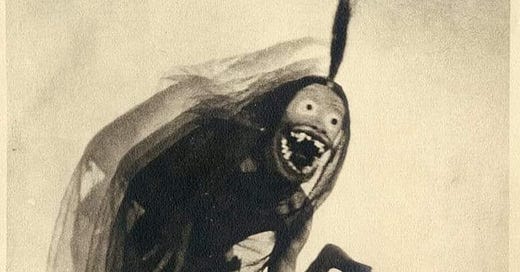The Visionary Photographs of William Mortensen
These grotesque photographs of death, nudity and torture could be considered prophetic of AI's proliferation. See why Ansel Adams called him ‘the Antichrist’ and wanted him written out of history.
In 1937, the photographer Edward Weston wrote Ansel Adams a letter noting that he had recently "got a beautiful negative of a fresh corpse." Adams wrote back expressing his enthusiasm, saying, "It was swell to hear from you—and I look forward to the picture of the corpse. My only regret is that the identity of said corpse is not our Laguna Beach colleague." The "colleague" Adams referred to was William Mortensen, one of the most popular and otherwise respected photographers of the 1930s, whose artistic techniques and grotesque, erotic subject matter saw him banished from "official" histories of the art form. For Adams, Mortensen was enemy number one; he was known to describe him as "the anti-Christ."
Born in Park City, Utah, in 1897, Mortensen studied painting in New York City before World War I, then moved to Hollywood in the 1920s, where he worked with filmmaker Cecil B. DeMille and shot portraits of celebrities Rudolph Valentino, Fay Wray, Peter Lorre, Jean Harlow and others, often in historical costume. He also created more abstract portraits of anonymous models, interpreting historical or mythological characters such as Circe, Machiavelli and Cesar Borgia, and shot images of witchcraft, monsters, torture and Satanic rituals, rarely shying away from nudity or blood. Despite his outlandish themes, between the 1930s and 1950s his images were widely shown both in America and abroad, published in magazines including Vanity Fair, and collected by the Royal Photographic Society in London. He wrote a series of bestselling instructional books and a weekly photography column in the Los Angeles Times, and ran the Mortensen School of Photography in Laguna Beach, where some 3,000 students passed through the doors. The artist and photography scholar Larry Lytle, who has done extensive research on Mortensen, calls him "photography's first superstar.” source





when other artists are wishing death upon you, you know you're on the right track